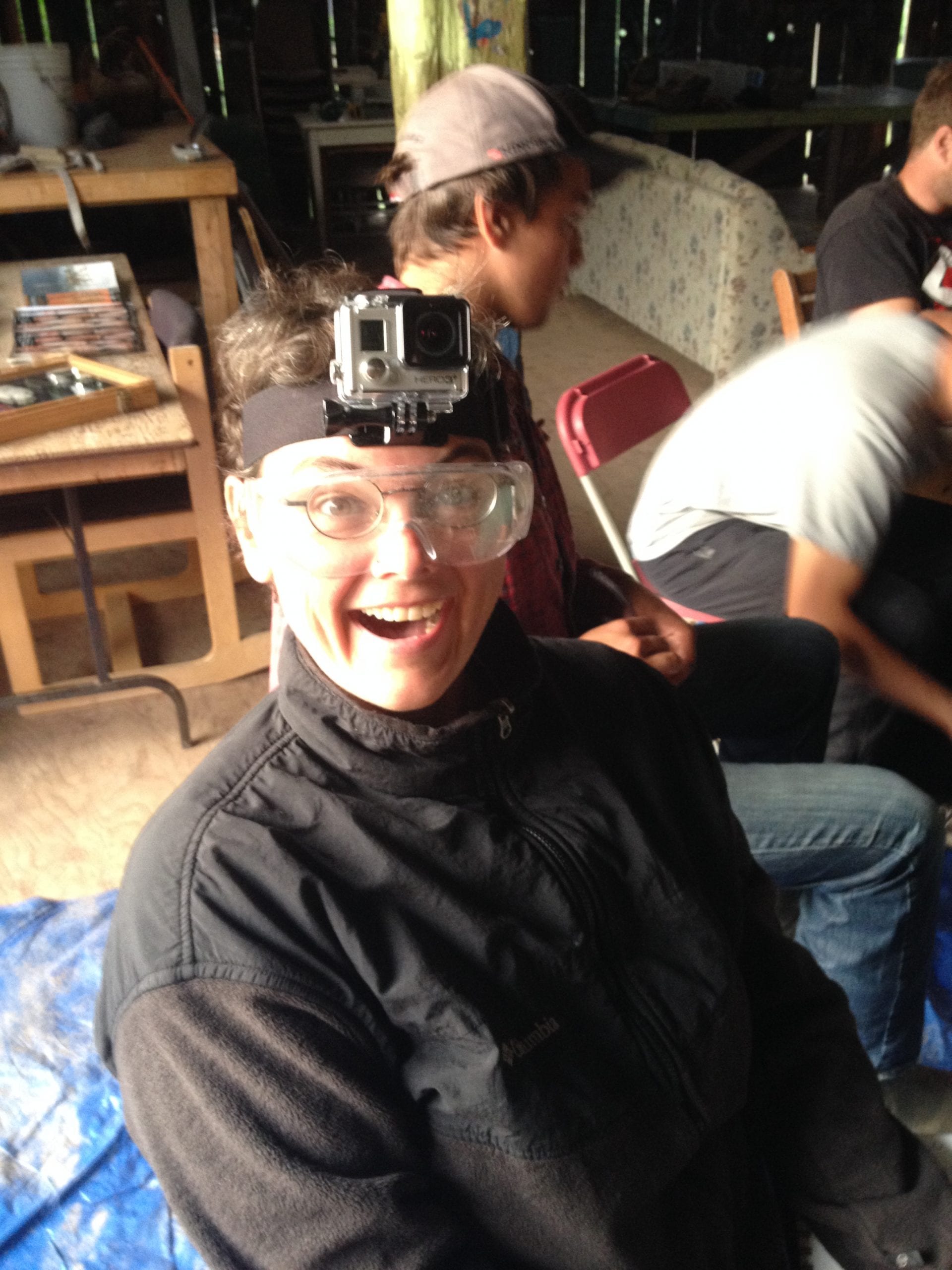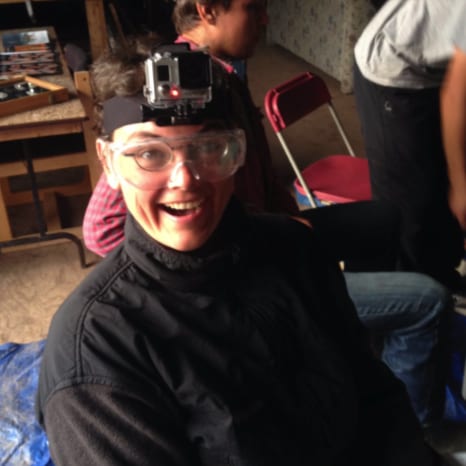One purpose of anthropology is to understand human cultural diversity, and therefore the methods to understand this diversity must delve into human experience. Cultural anthropology research design requires that researchers spend long hours in the field with participants, learning behaviors, beliefs, experiences, relationships, and myriad other aspects of human life. And the research can seem pretty mystifying to someone not trained in social science methods. I have fielded all kinds of questions about my cameras, notebooks, goals, and generally nosy nature during and outside of research. I am dedicating this blog post to everyone who has wondered what it is that anthropologists are doing with their time. Here you can read about cultural anthropology methods that I and other anthropologists use to collect data, with examples from my own dissertation research, as well as the collected experiences of seasoned scholars. These include the mainstays of cultural anthropology, like participant observation and interviews, as well as some of less well-known tools, such as free listing and videography.
Participant observation
During World War I, social anthropologist Bronislaw Malinowski was stranded in the Trobriand Islands of Papua New Guinea for three years. During his time there, he popularized one of the most well-known research methods: participant observation. Participant observation, also called “deep hanging out,†consists of participating in the everyday lives of research participants and systematically recording observations related to research questions.Malinowski did not invent the method, but he did cement its position as a defining process for data collection.
Participant observation takes place in as many different ways as there are research questions. Someone learning about changing agricultural practices might work on a farm while taking notes throughout the day. During participant observation, the anthropologist learns how to become a member of a community while documenting human behavior. When I am working as a participant observer, I volunteer as an educator at an environmental education organization and document their practices throughout the day. I basically follow the organization's members wherever they go.
As another example, Philippe Bourgois spent four years visiting crack houses and spending nights on the streets to study the use of crack-cocaine in East Harlem. He followed people on drug runs and recorded their drug use habits. This method is a substantial part of anthropological research, since it allows researchers to document unconscious behaviors, conversations, and interactions between people. These long hours devoted to social interaction and building rapport are integral to completing other phases of research, which may feel intrusive if initiated too soon in the process.
Interviews
After participant observation, an anthropologist has a better idea of how to approach topics of interest and can begin interviewing participants. Interviews are a fantastic way of getting to the bottom of how people think and feel. They range from unstructured conversations with people as they go about their daily lives to a structured set of questions that each participant answers.
For example, during my own research I switch between asking environmental educators questions on the fly, and sitting down with a set of questions for each educator and a digital recorder. I will interview the same participants multiple times during the course of my fieldwork over the next year, sometimes for a few hours at a time. This will lead to hundreds of hours of recorded materials to transcribe.
Of course, interviews are subjective. That's the point: to uncover lived experiences. Interviews can reveal actual and idealized life. If anthropology were based solely on interviews, those biases would wreak havoc with results. Thus, the prevalence of participant observation, during which a researcher can systematically observe behaviors that may go unreported during interviews.
Internet data and other texts
Internet data is increasingly gaining interest from social scientists, and is a great way to augment other forms of data if possible. The possibilities seem endless, and scientists are using Facebook posts, home pages, images, networks of followers, images, and videos to understand the social ecology of the Web. This data is freely available for the most part, and the ways that people represent themselves in media are endlessly fascinating. For example, when researching wilderness survival schools, I gleaned images from images from websites and categorized them according to the subject matter. I found that images on survival school websites were predominantly of white males, and that technology was almost entirely limited to knives or stone and bone tools. Classified ads posted online and in print are another example: researchers have found that the attributes that men and women seek and offer have changed over time with family and workplace roles. Any text or image, or even the structure of a web site itself, can be used be the imaginative researcher.
Free lists and pile sorts
Free lists and pile sorts are commonly used methods used to get into people's heads, and they are commonly used at the beginning of research. Free listing involves asking people to list as many items of a particular topic as they possibly can. One could free list common garden plants, authors, kinds of beer, or any domain of interest. The researcher then takes those lists, determine commonly mentioned items, and write them on index cards. Individuals are then asked to sort the items into piles that go together, yielding what are called cultural domains. These domains can show how people categorize elements such as diseases or environmental behaviors.
Videography
Videography is a powerful yet underutilized tool within anthropological research. It can be used to record tacit behaviors of participants or as a cue for interviews. Video has a rich history within anthropology, from Margaret Mead taping child-rearing practices to Joe Tobin's videos of children's enculturation in kindergarten classes in Japan, China, and the U.S. Jean Rouch was fabled to have strapped a camera to the middle of his body during his research into spirit possession in Bali, becoming a walking tripod. Because it is such an intrusive method, it is best saved for later in a research project.

In my own research l will videotape education programs and play the videos back for the instructors to use as cues for interviews. At the same time, I can use the videos to count the number of times certain gestures are repeated, or analyze the ways that people physically interact with wildlife. Since I am asking about how people use their senses to engage with nature, the videos will help me record them as they touch, taste, and otherwise sensuously engage with local landscapes.
This blog post just scratches the surface of how cultural anthropologists collect their data, yielding rich insights. We also borrow methods from many other disciplines, such as forest surveys and health data, depending upon the research. Hopefully the long fieldwork of anthropologists makes sense in light of the myriad options for making sense of human social lives.
About the Author
 Jennifer DeMoss is a doctoral candidate from the University of Georgia's Anthropology and Integrative Conservation programs. She is currently in the field researching social relationships between people and landscapes within educational programs in the Nature Connection Movement. She uses tools such as GoPro cameras strapped onto her head to video social interactions as part of her research. When she's not interviewing people, she loves to camp, practice primitive skills, carve spoons, and swim in spectacular northern lakes. You can contact Jen at jdemoss@uga.edu. Jennifer DeMoss is a doctoral candidate from the University of Georgia's Anthropology and Integrative Conservation programs. She is currently in the field researching social relationships between people and landscapes within educational programs in the Nature Connection Movement. She uses tools such as GoPro cameras strapped onto her head to video social interactions as part of her research. When she's not interviewing people, she loves to camp, practice primitive skills, carve spoons, and swim in spectacular northern lakes. You can contact Jen at jdemoss@uga.edu. |
About the Author
- athenssciencecafehttps://athensscienceobserver.com/author/athenssciencecafe/April 17, 2020
- athenssciencecafehttps://athensscienceobserver.com/author/athenssciencecafe/April 12, 2020
- athenssciencecafehttps://athensscienceobserver.com/author/athenssciencecafe/April 3, 2020
- athenssciencecafehttps://athensscienceobserver.com/author/athenssciencecafe/March 30, 2020







